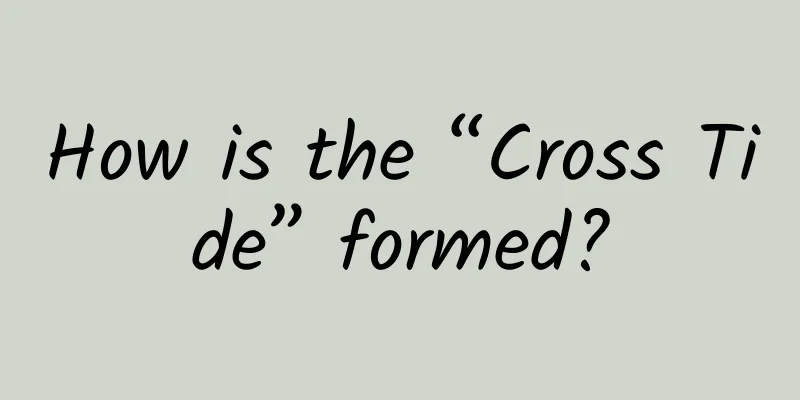[Smart Farmers] Fighting against insects to protect rice crops! Controlling the notorious rice pest - brown planthopper
![[Smart Farmers] Fighting against insects to protect rice crops! Controlling the notorious rice pest - brown planthopper](/upload/images/67f2430445066.webp)
|
Arthropods are one of the most prosperous groups in the animal kingdom, with an estimated 5.5 million species of insects, of which about 1 million have been named. However, more than half of these insects feed on plants or spread plant diseases, causing huge losses to agricultural and forestry production. In recent years, with the impact of climate change, the rapid development of globalization and urbanization, and species invasion, pests have become increasingly harmful to human life, production, and even survival. At present, there are more than 1,000 known agricultural and forestry pests in my country, of which more than 90 species have large occurrence areas and serious damage. The brown planthopper that feeds on rice is one of the notorious agricultural and forestry pests. What is the brown planthopper? Brown planthopper (Nilaparvata lugens Stal) Hemiptera, Delphacidae. It is an important pest in rice production in my country and many Asian countries. Brown planthopper is a migratory pest that mainly relies on air currents to migrate long distances. It has several generations each year and increases from north to south. Brown planthoppers reproduce very quickly and have a specific diet. They can only complete their development by feeding on rice and wild rice. Brown planthoppers prefer warm and humid climatic conditions. Under suitable environmental conditions, they are prone to outbreaks during the rice heading stage. The entire life cycle of brown planthoppers has three stages: eggs, nymphs and adults. The duration of a complete generation is about 30 days. The eggs of brown planthoppers are banana-shaped and are laid in the leaf sheath and leaf tissues, arranged in a line called an "egg strip". Nymphs are divided into 5 instars and have an oval body shape. After 15 days, nymphs can develop into adults. The body color of adults is dark brown or light brown, and adults have obvious wing dimorphism, that is, the same population can produce two types of individuals, long-winged and short-winged. Long-winged adults are good at flying, but lay fewer eggs and develop slowly; while short-winged adults are not good at flying, but lay more eggs and develop quickly, so the appearance of short-winged adults is a sign of an outbreak of pests. The three stages of brown planthoppers are from the Internet. What harm does brown planthopper do? The damage of brown planthopper to rice is mainly manifested in the following aspects: 1. Direct inhalation hazards Adults and nymphs gather at the bottom of rice bushes, sucking juice from stems and leaves, causing the water content of rice plants to drop rapidly. The salivary glands secrete a toxic substance that destroys rice plant tissues, forming many brown spots on damaged stems. When the rice is seriously damaged, the base of the rice plant turns black, and the rice is paralyzed and falls over, commonly known as "penetrating", "burning with lice", or "penetrating the sky", resulting in serious yield reduction or even loss. 2. Egg laying and harm When the female insect lays eggs, it uses its sharp ovipositor to penetrate the leaf sheath and stem tissue and lay eggs therein, forming a large number of wounds, which cause water to dissipate from the wound points and accelerate the lodging of the rice plants. The wounds are also a way for the rice sclerotinia to directly invade the rice plants. 3. Spread or induce rice diseases Brown planthoppers spread saw-leaf dwarf disease and rice grassy dwarf disease. The honeydew they excrete while feeding is rich in sugars and amino acids, which covers the rice plants and easily attracts the growth of sooty pathogens, affecting rice photosynthesis. The picture comes from the Internet How to prevent and control brown planthoppers? 1. Chemical control At present, the most commonly used pesticides include organophosphates, carbamates, thiamethoxam and neonicotinoids. When using pesticides, strong systemic pesticides are selected, which have significant control effects. However, when using pesticides, environmental pollution and pest resistance should be considered. 2. Physical prevention Taking advantage of the phototaxis of brown planthoppers, setting up insect-attracting lights in patches during the peak period of adult insects can effectively reduce the occurrence of brown planthoppers. In areas with frequent insect infestations, using insect-proof nets or non-woven fabrics to cover can effectively block brown planthoppers. 3. Biological control In addition to using natural enemies such as parasitic wasps, black-shouldered green stink bugs, ladybugs and spiders for prevention and control, the pathogenic microorganisms of brown planthoppers have a great inhibitory effect on the occurrence of brown planthoppers. 4. Choose resistant plants Using brown planthopper resistance gene resources to breed brown planthopper-resistant rice varieties through molecular breeding and other technologies is currently considered to be the most economical and effective measure for brown planthopper management. my country is a large agricultural country. In the process of crop cultivation, we encounter different types of pests every year. Brown planthoppers are the main pests of rice. They are very harmful and difficult to control. Once the epidemic spreads, it will cause a significant reduction in rice production or even a total crop failure. However, traditional chemical control is unsustainable. We need to further explore more reasonable control strategies and more scientific control methods. Produced by: Popular Science in China to Benefit Farmers Producer: Guangming Online Science Department Author: Zhang Yuxin, a graduate student at the School of Life Sciences, Hubei University Review expert: Xu Letian, associate professor and doctoral supervisor at Hubei University Planning: Wu Yuetong, Jiang Nan |
<<: Can plants catch a cold or have a fever? - Plant Attack and Defense
Recommend
After Shanghai, Jiangsu is experiencing hail! What kind of weather phenomenon is this hail that looks like both fertilizer and sugar?
Edit: Corner On February 22, according to the Nan...
World Oceans Day丨Today, let’s get to know this friend in the deep sea again
Expert of this article: Liu Yadan, former assista...
Common activity forms and user attraction logic
There are often some popular event cases on the m...
Yogurt and strong tea can help sober you up? Doctor: These are not effective for sobering you up. What really works is…
"The deeper the friendship, the better!"...
Apple and Google team up to track the spread of the epidemic using iPhone and Android apps
Apple and Google announced a partnership on Frida...
Sony H.Ear Go portable speaker review: All the connections you can think of are supported
In the past, when music was a luxury item, Sony w...
Mini-app development for Guangzhou housekeeping and cleaning companies
Guangzhou housekeeping and cleaning companies are...
How did the strange typhoon path come about, traveling at right angles and in a large V shape?
According to statistics, an average of 11.38 typh...
Marketing strategy and distribution system design!
1. Introduction: What is distribution? Where does...
The cost of iPhone 12 was suddenly exposed, only more than 2,400 yuan, and the profit was so huge
As a high-end mobile phone brand, Apple has alway...
Whole wheat bread mixed with "bran" in the flour? Experts: Bran and bran are not the same substance
"Wholemeal bread is made by mixing bran, als...
B-end product operation skills and strategies!
If B-side products are compared to people, a good...
Food Safety | Is being a vegetarian equal to being healthy? Your body will lack these nutrients
In recent years, with the high incidence of disea...
Perfect Diary & Huaxizi: The growth code of the beauty dark horse
The two dark horses of domestic beauty brands - P...









